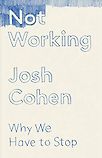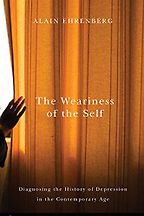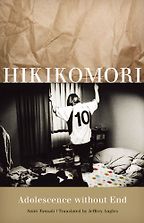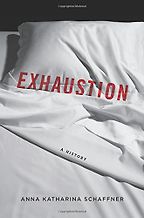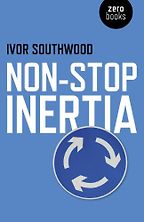What is burnout, and what causes it?
Burnout is probably as old as work itself, and in its most basic definition simply boils down to exhaustion from overwork. But, it runs deeper than that, because burnout also a condition of an overloaded nervous system. It was first designated as such in 1974 by a German-American clinical psychologist named Herbert Freudenberger.
Freudenberger noticed a number of specific features associated with patients referred to him, having to do not just with physical and mental exhaustion, but with a state of innervation. The feeling that overwork can induce is much more than tiredness; it induces an anxiety that places the sufferer in a rather hellish place between shutting down and waking up. Full wakefulness isn’t possible because the nervous system and body are so overburdened. But neither is a state of rest because there is a feeling that the sufferer’s always behind herself. Always chasing the next task. Always feeling that they haven’t done enough, which in turn induces the tendency to cynicism and indifference often associated with the condition.
Burnout has something to do with a feeling of fundamental inadequacy in the face of the tasks life imposes on us. Not just work tasks, but the tasks of relationships, of personal administration, everything really—everything that it takes to live and survive in the world.
You’re a psychoanalyst, as well as a professor of literary theory. How common are the symptoms of burnout among your clients?
I’ve been practicing now, in some form, for about 15 years. And it seems to me that anxiety over work seems to have a more prominent place at the front of people’s minds in the consulting room. Not just the overwork of waged labour, but the sense of the whole of life being overworked. Now, because the sample size is so small and, arguably, so demographically specific, it’s hard to make generalisations out of a single clinical practice. But it has been very striking.
The thing about cultural phenomena, from a psychoanalytic point of view, is that they touch on many conscious yet unconscious vulnerabilities, those private places scratched and poked by social messages. One sore spot, I think, is the implication that we might not be doing enough—and that we might not be enough.
Get the weekly Five Books newsletter
Social media is a a social experiment, a cultural experiment, whose effects are so uncertain in many different respects. One of them certainly is that it induces an ongoing state of competitive anxiety and envy: the sense that the other person has always got it a bit more straightened out than you have.
It seems to me that, even in its most benign manifestations, one of the ways that social media seems to work is that its most successful practitioners or online presences are successful less because of what they’re doing or achieving, but because of their capacity to project success into the world and engender that kind of anxiety.
I think I agree. Your book, Not Working: Why We Have to Stop, describes the pleasures and creative benefits of withdrawing from social and work-related demands. But, as you mentioned before, our culture frowns upon idleness. Why do you think that is?
I think our culture defines our humanity more and more in terms of its visible and verifiable manifestations, the evidence of what we do. But what about those aspects of us that can’t be externally verified, say, by pictures or some other form of public display? That dimension of the human being which cannot be measured in likes, or another metric of objective social achievement.
In idleness, by definition, we’re not projecting our achievements into the world, and so, from a certain perspective, it is intrinsically time wasted. It’s time when you could be showing something to the world. The more that we move towards a culture of externalisation, of turning ourselves inside out, and showing the evidence, the more something like the private self, cultivated in idleness, is devalued.
Rousseau wrote in praise of idleness, but he clarified that the type of idleness he loved was “not that of a do-nothing who stays there with his arms crossed in total inactivity and thinks no more than he acts.” Instead, he spent time walking, reading, embarking on projects and quickly abandoning them, acting upon whims, “in sum, musing all day long without order and without sequence”—and that this was a fertile activity in itself. It led him to new projects and unforeseen breakthroughs. Should we all make time for undirected activity?
I try to avoid the word ‘should,’ but I certainly think it’s something that everybody could benefit from more.
What you often find is a certain personality type who says, ‘Look, work is what holds me together. Activity is what holds me together. If I let myself go . . .’ There’s some almost apocalyptic intimation of how things might fall apart if they let themselves just stop for a moment.
There is a confusion between doing nothing, and not doing anything. “To do nothing,” Oscar Wilde said, “is the most difficult thing in the world.” Not doing anything is really a purely negative definition in which all you are designating is the absence of a particular activity that can be measured or seen. Whereas doing nothing has to do with cultivating a state of mind in which new possibilities can enter the mind and the world. And that, I think, is what’s so valuable about it.
There is something about compulsive activity—Schopenhauer makes this point when he talks about habit—which is lazy in a different way than what I’m talking about. People get so attached to habit, I think, because it assures us that things are going to remain the same. That nothing is going to come in to disturb the terms on which we live in the world.
“Not doing anything is really a purely negative definition, whereas doing nothing has to do with cultivating a state of mind in which new possibilities can enter the mind”
Up to a certain point it’s entirely human and understandable. But I think it becomes inhuman and inhumane when it really excludes altogether the possibility of a patient waiting in stillness for whatever is to come, or even to not come. Because one can be surprised also by listening to silence, or by emptying one’s mind of too many contents.
There’s a story I refer to in my book that I like very much, quoted by Sextus Empiricus, the later Greek philosopher who formalised and systematised Skepticism. He has a story about the painter Apelles, who was desperately trying to paint the foam spilling from a horse’s mouth. Every attempt made him despair and scream with frustration, and so he ended up throwing his sponge at the canvas. And when the sponge fell on the canvas, exactly the right effect was created at the horse’s mouth.
A eureka moment.
It’s a lovely story—a story about the idea that we can allow in advance for inspiration. That everything we achieve has to do with conscious, controlled intention. It’s about letting in the possibility of being surprised, of not knowing at any one point what it is that’s going to give you what you’re searching after.
Let’s discuss your first book choice, Alain Ehrenberg’s The Weariness of the Self: Diagnosing the History of Depression in the Contemporary Age. What made you select this text?
It is the most systematic treatment of the depressive effects of burnout. It gives us a very detailed and rich picture of its clinical symptomatology. But more interestingly, I think, it gives us a psychosocial understanding of the social conditions of the possibility for burnout.
It’s a book which is very sympathetic to psychoanalytic thinking, but also challenges it. A psychoanalyst needs to be able to have his own paradigm put in question, especially given what I’ve said about habit, habitual thinking, and becoming rigidified by compulsive activity.
One of the interesting things he does is he says: ‘Look, we have a certain account in Freud, and in psychoanalysis, of why it is that people come to feel bad and inadequate about themselves.’ And the account, of course, is the superego, which has to do with license, with what we are licensed and prohibited from doing. If we do something that we’re not supposed to do, then the superego comes along and reproaches us; it belittles us, and makes us feel like we’re bad people.
“Positive thinking is supposed to be empowering. But in fact it sets us up against an ideal of ourselves in the face of which we always feel inadequate”
Ehrenberg says: ‘Is that really where we are?’ It was published first in 1998. So, he’s coming in at a moment where he’s really detecting a shift, probably dating back to the 1960s and 1970s where a different kind of language is taking over. At the beginning of John Updike’s Rabbit tetralogy, the beginning of Rabbit, Run (1996), there’s a moment where the little boy is watching The Mickey Mouse Club on TV, and Updike zeroes in on the language coming in through the Disney Corporation: ‘Everybody’s different! You have to be your own best self! Anything’s possible if you want it to be!”
This language of possibility, Ehrenberg says, actually supplants the language of permissibility. He says, “Possibility over permissibility”—by which he means not, ‘yes you must do this,’ which is the superego’s maxim, but, ‘yes, you can.’ This is the watchword of a less well-known, earlier notion in Freud, the ego-ideal. The idea that ‘you can’ is a very different kind of persecution from ‘you must.’ It’s a simple, but very original and illuminating thesis, because it explains how the pervasive language of positive thinking can induce feelings of persecution rather than optimism.
Positive thinking always assures us that we can be more, that we can do more, that we can achieve and attain more. This is supposed to be empowering. It’s supposed to make us feel very good about our own capacities. But in fact, it sets us up against an ideal of ourselves, in the face of which we always feel inadequate, and against which we’re always falling short of.
Yes. The reproach comes from a sense that one is not reaching one’s full potential, not chasing dreams to the furthest extent.
Right. And that’s structural rather than contingent. That’s what’s so interesting about it. It’s not as though I happen to miss the target of the ideal, and next time maybe I’ll get there. It’s built in to the way this ideal works in us: we always fall short of it. If we didn’t fall short of it, it couldn’t do it its work, which is to spur us to always go one step further.
So that’s why metaphors like the hamster wheel, or indeed the Myth of Sisyphus, are so popular: because we’re not meant to reach an end point. We just have the end point dangled in front of us like an ever-receding carrot.
As a brief aside: this book is a study of the history of depression. Is there a difference between burnout and depression?
Yes, in the sense that depression is a much broader designation. In the history of psychiatry, of psychotherapy, of psychology, mental health generally, depression is notoriously elastic. It brings many different symptoms and conditions, at variable degrees of acuteness or chronicity, under a single umbrella.
One of the problems, I think, is its elasticity. It becomes so generalized, and can encompass so many different clinical entities. In severe clinical depression, the sufferer is in a catatonic state, so debilitated that they’re literally unable to get up from their bed, the world weighing on them with a literally depressive heaviness that feels impossible to escape. In a way, it’s hard to specify what that has to do with the kind of ordinary depression that is part of ordinary neurotic life of all of us.
What is useful about a term like burnout is that it certainly speaks of a variety of types of depression, but ties it to both specific symptoms and specific conditions, cultural as well as personal. So, somebody who’s ‘burnt out’ feels persecuted simultaneously by the standards they set themselves and the ones enforced by internalized authority figures. When we’re trying to attain this ideal, we usually have particular figures in mind, consciously or unconsciously: our parents, our teachers, as well as more phantasmatic figures like celebrities, people who loom large in our consciousness.
Five Books interviews are expensive to produce. If you're enjoying this interview, please support us by donating a small amount.
In burnout, I think, there is this sense of nervous oscillation between a hyper-manic readiness to do too much, and a shutdown in the other direction. Often, I think, one of the best encapsulations of the sensibility is, Waiting for Godot’s “‘Let’s go, yes, let’s go’. [They do not move].” That in a way is what the burnout is always saying: ‘Now is the time to go, now is the time to go,’ but they do not move. That inability to be stationary, paradoxically coupled with an inability to move out of one’s predicament—that’s what specifies burnout as a particular hybrid of anxiety and depression.
What you don’t get in burnout in quite the same way as you do in a classical depression is a sense of fatalistic resignation. They can’t bring themselves to give up. But at the same time, they can’t bring themselves to try, either. That, to me, is really purgatorial.
Absolutely. Let’s discuss your second book, Hikikomori: Adolescence Without End. It’s a translation of a bestselling 1998 Japanese work of popular psychology.
This is a very lucid, clinical account of a hidden social phenomenon that the author, Saitō Tamaki—a psychoanalytically sympathetic psychiatrist—was the first to identify in Japan as hikikomori, literally ‘social withdrawal.’ It is about a generation of young people, aged about 18 and 35, in the late 1980s, whose parents came to him and said: ‘my child will not come out of their room. They’ve withdrawn completely from the world, they’ve given up. They’re taking all their meals in their room, and they will only come out for bathroom breaks.’
Tamaki uncovered this not as a localized urban phenomenon, but as an epidemic. Indeed, the government office of statistics in Japan estimated in the wake of Tamaki’s research and very widespread reporting, that there may be as many as 700,000 cases of hikikomori in Japan. Tamaki put it closer to a million.
One wants to ask: what is it about Japan? Because it seems to be quite culturally specific. He suggested that one of the reasons it might have been more prominent in Japan is because there is a sealed-in culture of family honour, and shame, and perhaps a stronger imperative to keep the potential shame from the public gaze. Partly too, to protect the child. It took someone like Tamaki to give it widespread recognition.
“They are in a state of suspension between the end of childhood, and an entry point into adulthood that they can’t seem to approach”
But then, it was documented in Korea, too, and he also suggests that there are analogues in Western societies: an equivalent population in Anglophone countries, particularly among ‘Neets’—that is, those not in education, employment, or training. They may not be quite as withdrawn, but they are similarly aimless. They are in a state of suspension between the end of childhood, and an entry point into adulthood that they can’t seem to approach.
This, I think, is really interesting in relation to burnout. For me, it cements the idea of burnout as being a malaise of inadequacy and a sense of failure. These kids are, in a way, so overburdened by the prospect of not achieving, of not fulfilling the potential that’s been transmitted to them in the educational system, in the employment system, by their family. There is so much anxiety about fulfilling the role that’s been legislated for them in their future that they’ve shut down.
They’ve burnt out not so much as a result of what they’ve done, but as a result of a burden of expectation that they’ve internalized. That’s also part of what makes the difference between simple exhaustion—which we all feel—and burnout. Burnout has something to do with being overburdened by a set of self-imposed (or externally imposed, but heavily internalized) expectations.
In your book, you discuss Emily Dickinson and how her reclusiveness played an important role in her creative process. Where’s the line between personal choice, and when it should be pathologised?
That’s a great question. It probably needs to be pathologised when withdrawal becomes a desperate, last-ditch measure: a means of escape, rather than a choice that’s embraced.
One of the points that Tamaki makes that’s worth reiterating, is that hikikomori are never happy. You don’t ever come across a case— at least not in his book—where one of these late adolescents or adults in their twenties says, ‘you know, I’m sitting in my room, and I’m gaming, and listening to the radio, and having my meals on my own, and I kinda like it.’ None of them say that. They’re all caught in this hellish non-place and feeling empty of anything but a kind of deadened anxiety. And every day exacerbates the predicament, because it’s another day in which they fail to find a way out of the impasse.
What Dickinson does is, well, she has various exits from the privacy of her own room available to her. The most obvious is marriage at various points in her life—although there’s suspicion among biographers that some of the epistolary lovers that she writes to are actually imaginary, rather than real. Maybe sort of composite figures. Anyway, she’s not posting these letters, and we don’t really know who these figures she’s writing love letters to are—but nonetheless, she has real-life opportunities to be courted. To have an apparently more expansive life in the form of a wife, and a mother. She explicitly turns down those opportunities.
“She says that ‘no’ is the most passionate word in the language for her”
In my biographical essay on Dickinson, I talk about the much older man, Otis Lord, who desperately wants to marry her, and she keeps up this very passionate correspondence with him. She talks about how much she loves him, but part of the way she talks about love is as a form of renunciation: ‘No, I won’t share your bed.’ She says that ‘no’ is the most passionate word in the language for her. Because that’s, in a way, what keeps passion alive; if you don’t actually consummate it, then it’s always—and this relates to an idea in of creativity itself in Dickinson that creativity—keeping imaginative possibilities alive. As soon as you choose a path, as soon as you choose a husband, then you’re giving up, in a way, on the imaginative possibilities of love.
So what looks like withdrawing to her room to scratch out poems, is a way of preserving the infinity of her own mind. There’s a kind of imaginative richness in withdrawal for Dickinson that is absent from a pathological withdrawal.
Let’s move on to Anna Katharina Schaffner’s book, Exhaustion: A History. I found this very interesting because it begins in classical antiquity. I had considered exhaustion—or burnout, specifically—as a modern phenomenon, linked to 24/7-availability culture. Am I wrong?
Well, she would say so, I think. One of the things she’s trying to do in the book is pull us away from a kind of presentism that says that these are unprecedented problems that we’ve never experienced before. I think she’s right on this, and she points to those moments in our ancient and modern past where overwork and overstimulation has had a similarly urgent place in the public conversation.
On the other hand, I would probably argue with her a little, because one always needs to make the arguments about the specificity of a particular condition, or why it is that this becomes such a live issue at a particular moment in history. But overall I agree that concern and alarm at our vulnerability to exhaustion and weariness goes back almost as far as the history of writing, the history of human observation itself.
Ecclesiastes is one of the great statements of weariness of the self: “Vanity, all is vanity.” That sense of existential malaise, of all the possibilities of the world having already been exhausted, of there being nothing left to do, which again, we think of as being very post-modern. But it has a very venerable lineage to it.
So if you’re interested in the genealogy of our present malaise, then Schaffner’s book is really interesting. It’s also interesting because she reminds us of how variegated a phenomenon exhaustion is. That it has a relationship to the physical, the mental, the social . . . It registers at so many different levels of life, from the intensely personal to the intensely public.
Your next book choice deals with very contemporary issues. This is Ivor Southwood’s Non-Stop Inertia. He describes contemporary people as, “performative labourers, full-time job seekers, social networkers, and consumer-citizens.”
Yes. I put this on the list because I think it’s one of the pithiest and most powerful descriptions of the political economy of inertia. By which I mean these new labour practices in which corporations and the state come together to install a new practice of labour, and a new set of relationships to our own labour, wherein it’s not enough to think of work in terms of financial necessity. It’s not enough that we are looking responsibly for a job; our actual attitude to it is policed.
In the world that Southwood describes from experience, it isn’t just that you keep a record of which jobs you applied for that day. The Job Centres ask you to keep a diary of two or three positive things you’ve done this week to find work. He ties this in to the rise of a kind of positive-thinking management culture, which requires that work not only be performed efficiently and punctually and competently, but enthusiastically.
“Southwood really anatomises the new culture of the workplace that ties the precarity of finding work and keeping work to this culture of enforced positive thinking”
There was a BBC documentary about a call centre in the UK, shown about a year ago, in which the manager of the call centre gets the entire staff to sing. This is all part of the fun and the excitement of work. So, they all sing ‘Mr Brightside’ by The Killers. He’s leading the song, shouting, ‘Come on! Put some welly into it!’ and it all sounds like a bit of fun and sunshine and relief in a demanding workplace. But then he confesses about 20 minutes further on that he fired a couple of people for not singing.
Southwood really anatomises the new culture of the workplace that ties the precarity of finding work and keeping work to this culture of enforced positive thinking and action. That’s what he’s describing as non-stop inertia, because you feel like you’re never really getting anywhere. The conditions under which we find and keep work are self-cancelling in so many ways, and yet you have to keep going at a pace that makes your enthusiasm visible.
So, it’s both a very funny and a very frightening personal account, and a political anatomy of the precarious state of work. Again, it suggests why burnout might have a special diagnostic place among the different forms of depression that we’re suffering these days.
Perhaps we can move on to your final choice, J K Huysmans’ Against Nature. You said earlier that it was “difficult to choose one amongst a number of great portraits of burnouts in literature,” but that you settled on this cult classic in the end.
Yes. This is a novel from the late 19th century, and what it dramatises, really, is the great antecedent of burnout, neurasthenia. Neurasthenia means the overloading, the overburdening, of the nervous system; it was a term coined by the American psychologist George Beard. He saw industrial culture, urban culture, and the emergence of a society remarked upon by many sociologists as being unprecedented in terms of the daily load of stimulus it imposed upon the mind and the body. Beard wrote a book called Neurasthenia, also a book wonderfully titled American Nervousness.
The German sociologist Georg Simmel pointed out that the average person living in a city would see more people in a day than their grandparents saw in a lifetime. Now, of course, those of us who live in cities take this level of stimulus for granted; in a way, we could say that at an evolutionary level our organisms have grown, or evolved, to absorb this daily bombardment. And yet it’s happened in a very short space of time: probably the organism can’t keep pace with the pace of technological change. That was also the thesis of a famous pop sociological book of the 1970s, Alvin Toffler’s Future Shock, which posited the idea that the human organism cannot keep pace with the evolution of culture and society.
The book I’ve chosen, Against Nature, is hysterically funny in many ways. It’s about a languid aesthete called Jean des Esseintes who retreats to his family villa in Fontenelle, outside of Paris. The novel portrays brilliantly all the paradoxes and tortures of what we now call burnout—arguably more accurately than any nonfictional treatment.
Get the weekly Five Books newsletter
So, des Esseintes has led this nervously overburdened life. Not of overwork, admittedly, but of excess. He’s lived a life of sexual and narcotic debauchery, and there’s every indication that he arrives at this villa mentally ill. Certainly burnt out. He tries to forge various schemes to calm himself down, to find inner peace, and each one is more cockamamie than the last.
He conjures up these weird hobbyistic initiatives like encrusting his tortoise with precious jewels. Well, of course, his tortoise dies. And he cultivates these very rare, beautiful hothouse orchids. Again, they are both monstrous and unsustainable. And all of the time he comes up with these personal schemes to occupy his mind in a way that might finally allow him to reach the quasi-monastic equilibrium he so desperately wants. Just as he’s about to get there, he finds that something happens to jolt him out of his state of peace, to induce nightmares and nervousness and discomfort. The things he does to restore his peace end up disturbing it even more.
It’s really about the basic predicament of burnout, that movement between stasis and innervation. The desire to cancel out all desires, which. can never really be fulfilled. Can never really succeed in getting to the point where we’re finally free of these persecuting feelings.
In Not Working you discuss Melville’s ‘Bartleby, the Scrivener,’ a short story about a clerk who refuses all tasks with the words, “I would prefer not to.” Is this the way forward?
It might just be! It is a wonderful formulation, “I would prefer not to.”
This is one of the most written about stories in the history of literature. The reason it’s so subversive is that it gets us out of the binary of compliance and refusal. Because he doesn’t refuse to, right? That’s not what Bartleby says. If Bartleby said, “I refuse to do copying,” then that’s part of an established language of conflict in the workplace. The answer to that can be, “Well, you’re fired.”
The thing about “I would prefer not to” is that it seems—to use a phrase of Roland Barthes’—“to baffle the paradigm.” In other words, to introduce a way of relating, a form of language, that has no precedent. What do you do with somebody who says, “I would prefer not to”?
There’s a passivity about it, a refusal to play the game, that the narrator (the employer of Bartleby) remarks upon. He says something like, ‘There’s nothing more liable to infuriate than a passive resistance.’ With an active resistance, well, you know where you stand. You can take an equal and opposite reaction. But a passive resistance seems to exhaust all the possibilities of response, and that’s what Bartleby does. There’s no comeback with Bartleby.
In terms of whether it’s the way forward for us, it may be that if we’re going to find ways out of our predicament, then we need a reliable picture of exactly what it is. To me, it has to do with the totalisation of the system. The sense that it blocks off—and you see this with the hikikomori—all points of exit. It can feel as though all the spaces to breathe and pause are disappearing
One of the things that the formula, “I would prefer not to,” is doing, is cultivating a small space, psychic and physical, that no one can penetrate. Saying “I would prefer not to” creates an inviolable space around you, and even though Bartleby ends in bathetic tragedy, the story itself, the formula, I think, gives us some indication, some glimpse, of what it would be to say no, to place an inviolable cordon around our private, imaginative lives.
Interview by Cal Flyn, Deputy Editor
February 18, 2019. Updated: October 10, 2023
Five Books aims to keep its book recommendations and interviews up to date. If you are the interviewee and would like to update your choice of books (or even just what you say about them) please email us at [email protected]

